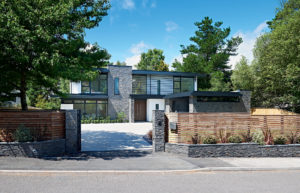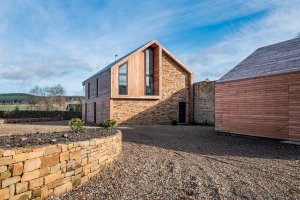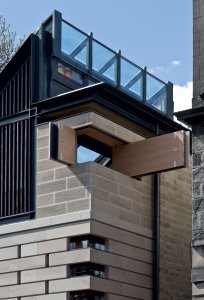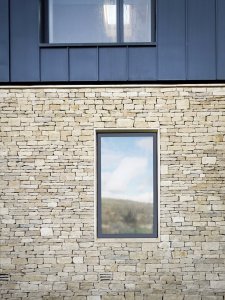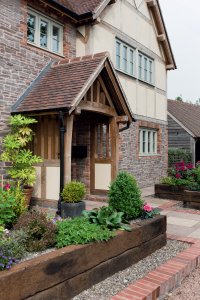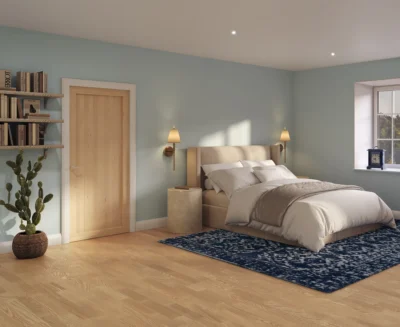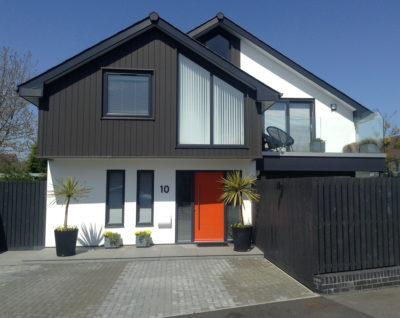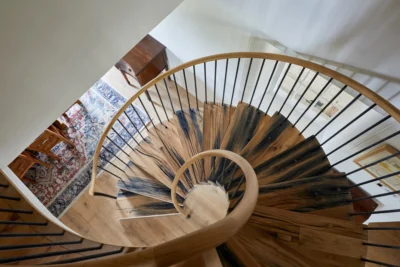Stone Cladding Design Ideas
If ever there was a building material that conveys a sense of solidity and robustness, stone is it.
It encompasses everything from the crisply cut blocks of ashlar used for classical buildings through to local materials used in rural cottages, and while these may vary hugely in appearance, what they have in common is the sense of permanence they communicate.
Today, architects and designers are rediscovering stone as a key building (or, more usually, cladding) material. It comes as part of a wider appreciation of vernacular structures and how they can foster a sense of continuity with local tradition; an approach the planners like.
The craftsmanship of stonemasonry and other skills, such as flint-knapping, is also being newly appreciated, and we have a stronger interest in keeping them going. Incorporating stone in a building may also present one of the few opportunities to source something truly local.
A subtle variation in colour and texture is one of the reasons why stone is specified, bringing a pleasing sense of irregularity to the architecture. This is especially effective when contrasted with other, crisper-edged materials: think slim-framed glass, render or timber cladding.
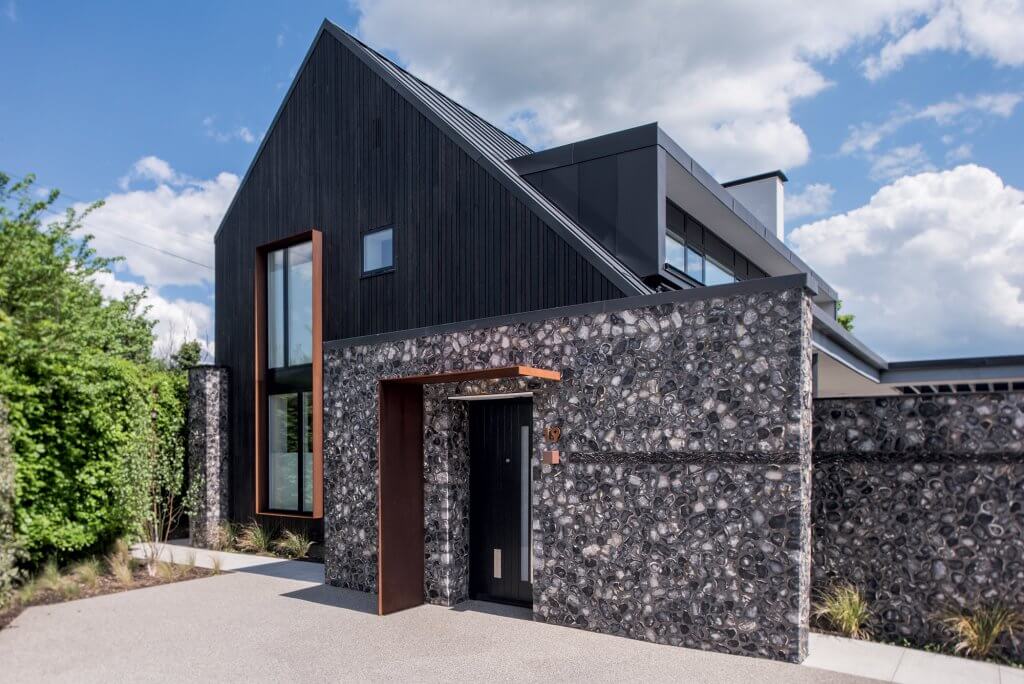
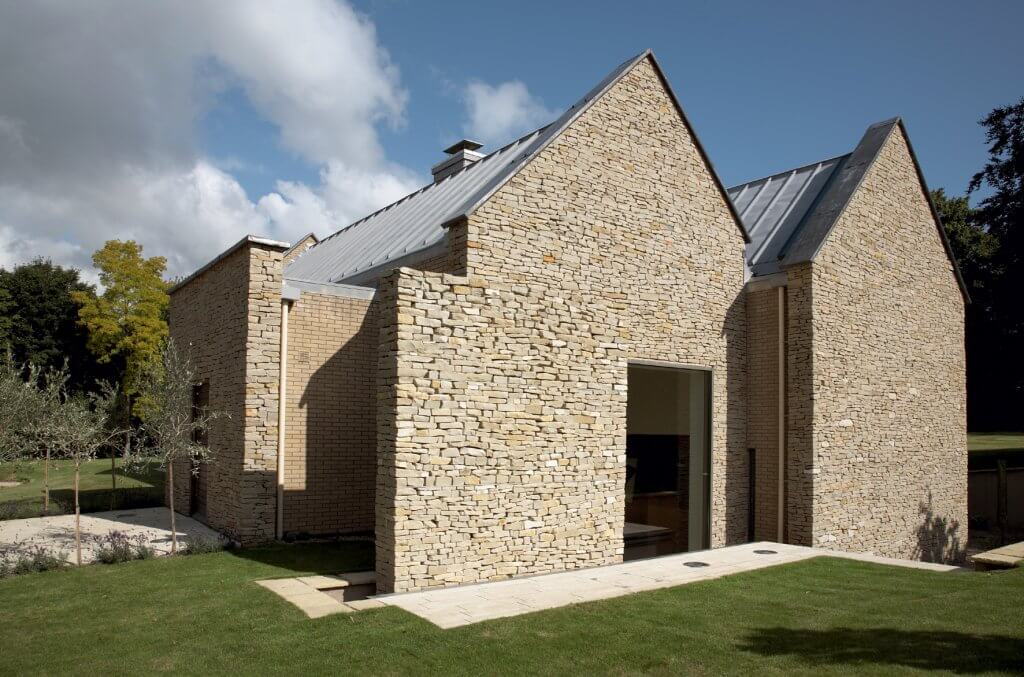
Some types of stone are prized for their even colour, such as Bath stone or granite. The cut, laying pattern and mortar can also have a bearing on the final character of a building.
Cladding can be installed one stone at a time, but modular panel systems have helped speed up installation; they can be laid directly against blockwork, or, in the case of timber-frame systems, to an additional layer of backing board.
Sometimes, a little stonework can go a long way, and many self-builds use it sparingly but to great effect – on a gable end or for an entrance, for example. Cast stone (made from crushed aggregate) is nowadays used for traditional-looking features such as window surrounds, porticos or balustrades.
Many houses with a stonework element continue the theme into the wider landscaping. Stone boundary and garden walls, plus paving, are effective for uniting a house with its wider surroundings. It can also be used to link inside and out, with stone-clad internal walls, chimney breasts and flooring.
Browse the gallery below for more stonework design ideas:
The expert view
Adrian Biles-Wood from CaSA Architects shares his expertise on designing a house with stonework.
What affects the material’s appearance?
The cut of the stone is the most significant thing to influence how it looks, from the irregularity of walling varieties through to ashlar (large square-cut stones).
We predominantly work with the former, laid dry or mock dry/spot bedded to give an open joint. For ashlar, we generally use filled and flush joints to create a crisp monolithic finish. The way the face of ashlar is finished also has a big impact on its appearance.
It can be spun, giving a polished look, which expresses each block and highlights the mortar joints, or dragged, having a slightly rougher texture that disguises the mortar joints. It also weathers more softly than the spun finish, which can suffer from streaking.
How do you go about sourcing local stone?
We always liaise with nearby quarries to carefully select the material and understand its characteristics and limitations. Once we have agreed on a type, we have the contractors and sub-contractors involved erect sample panels in the selected material to ensure they are familiar with it – once this has been approved it also gives a point of reference for quality.
Is stone expensive compared to other options? Can it be used in smaller doses?
Stone is one of the most expensive cladding/building materials due to the cost of quarrying, cutting and transporting it, as well as the building process itself, which is both labour- and skill-intensive.
Sometimes clients have to make difficult decisions to balance quality and cost, which can be managed by the use of natural stone in the key areas, supplemented by alternatives such as render in less important ones.
Would you always recommend a local stone, rather than a cheaper lookalike?
We often refer to the value rather than cost, and there are many aspects to a material’s value. Wherever possible, we try to source products as close to the project as possible through local suppliers, which should assist in ensuring the material is appropriate in its context.
This way, there is a more direct relationship through supply and quality control, and the embodied energy is reduced as much as possible.
Are there any other considerations about incorporating stone in a new home?
The size of the stone is important. Firstly, for its handling: this material is heavy, so ensuring the overall module sizes can be safely delivered, moved, lifted and laid is critical. Secondly, wastage is a consideration. In the case of ashlar, some quarries will cut stone down to 1m in height, from which the smaller six-sided modules are sawn.
So this 1m unit must be considered to maximise the value of the stone and minimise wastage. Thirdly, quality control of the material supplied is critical to ensure works appear consistent.
This is particularly relevant when using walling stone to keep the stone modules, while irregular, consistent in irregularity and size. It’s important to minimise the number of people laying stone, particularly when using walling materials, as separate workmen could lay it slightly differently.
Top image: David James Architects used a contrasting mix of crisp white render and split-face slate cladding for this contemporary house in Poole, Dorset.
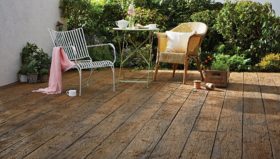
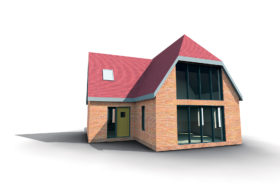





























































































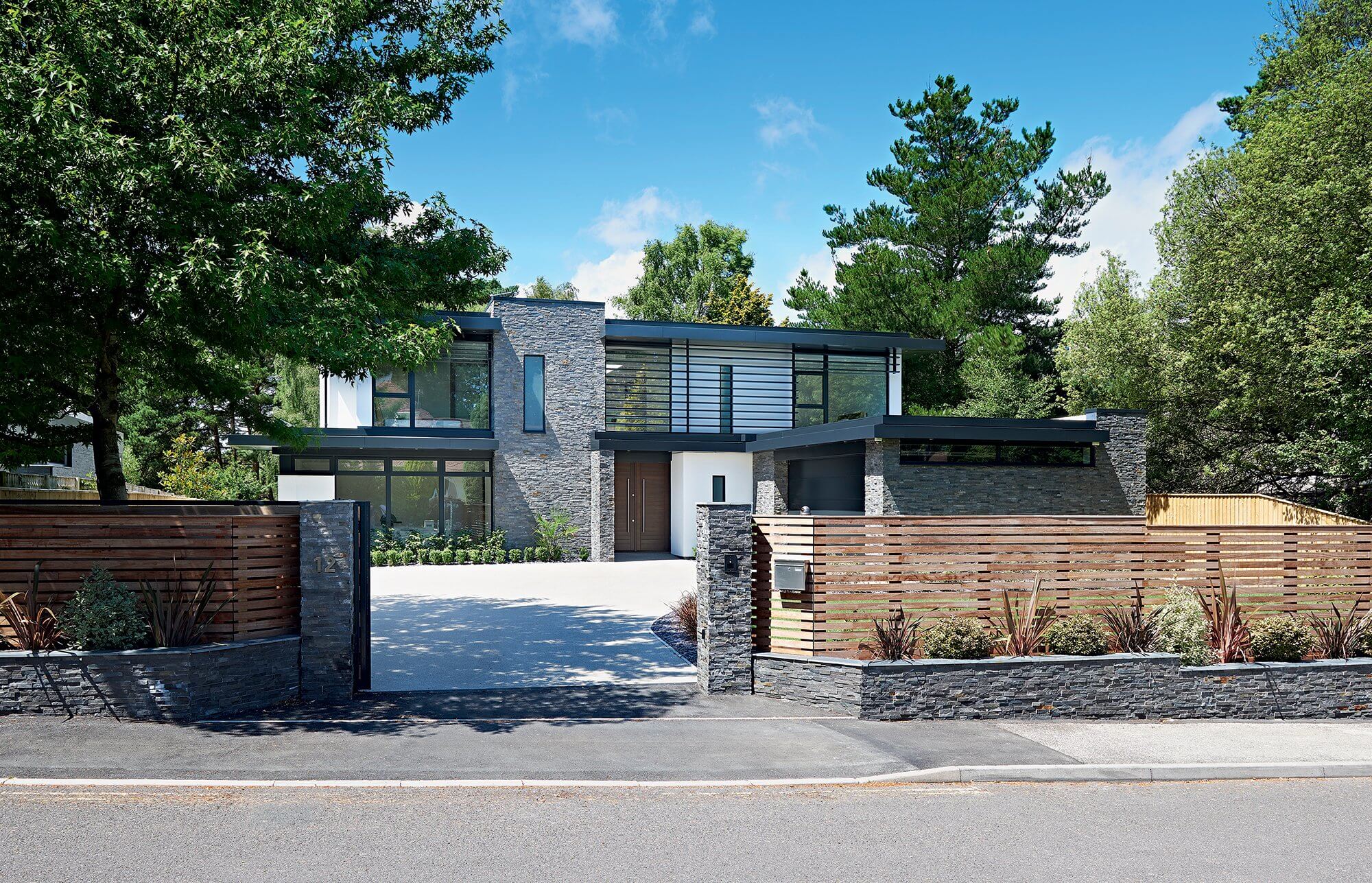
 Login/register to save Article for later
Login/register to save Article for later

